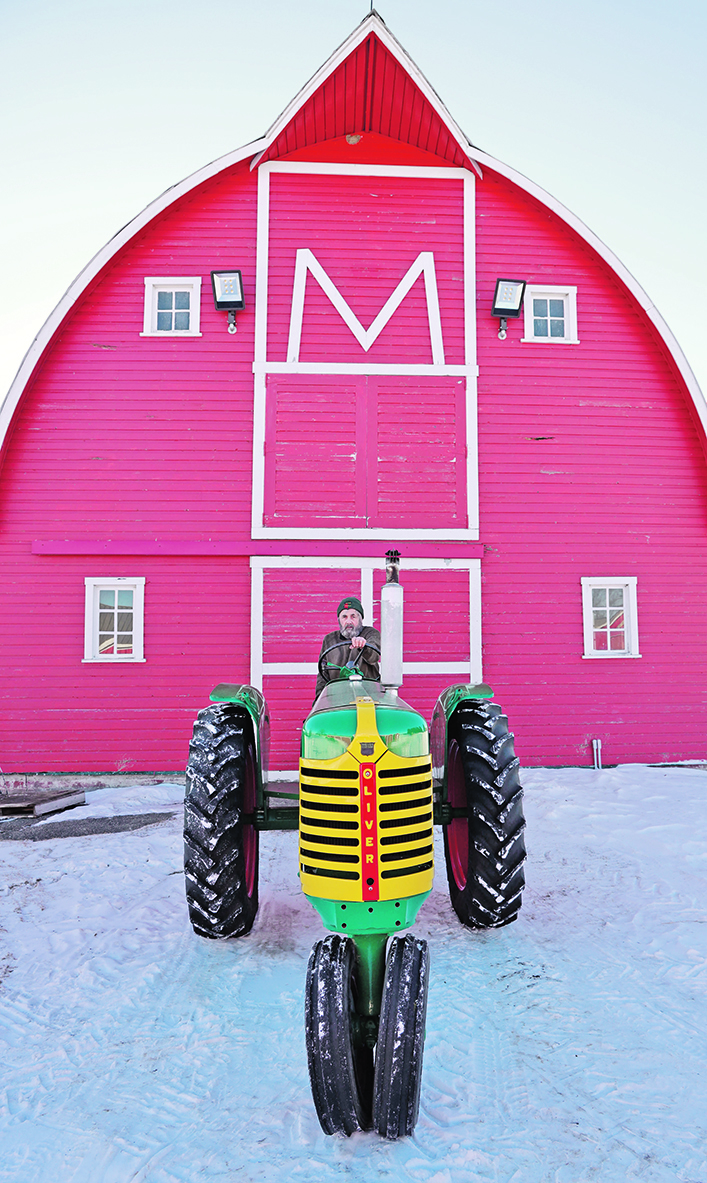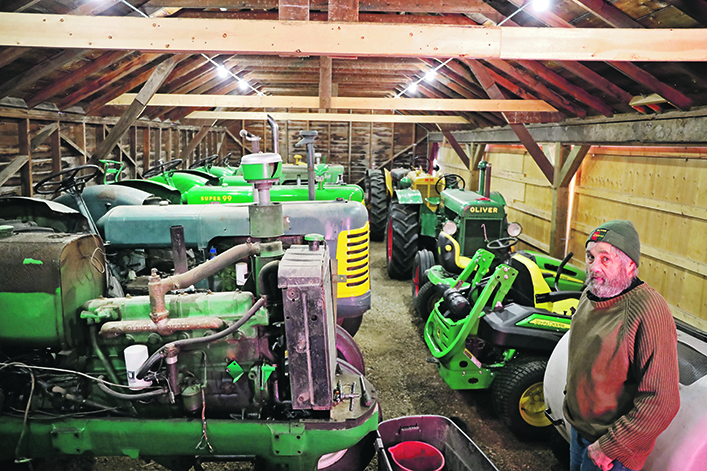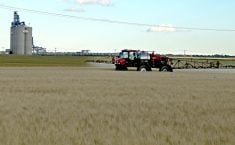Competitors spend long hours working on their machines in the shop and then get to see the results on competition day
CALMAR, Alta. — The pull of vintage tractors is irresistible to Robert McKell.
Add in vintage tractor pulls and McKell can’t think of a better way to spend a day, or an entire summer.
“I love old tractors. I love hearing them and I love playing with them,” said McKell, who collected more than 40 vintage tractors before competing in his first tractor pull 16 years ago.
“There is nothing better than competing in a tractor pull,” said McKell, of Calmar, Alta., who spends his winters rebuilding tractors for the summer competitions.
McKell is a member of the Leduc West Antique Society, an organization dedicated to restoring and maintaining antique equipment, buildings and other items. Traditionally, Leduc West hosts three tractor pulls each year, including the provincial finals. The top three winners from sanctioned tractor pull competitions across the province can compete in the Alberta finals, hosted at Leduc, just south of Edmonton, in September.
For the past two years, COVID-19 has reduced the number of competitions, but McKell managed to compete in several last summer. Unlike previous years, where spectators were encouraged, the recent pulls have been limited to competitors.
“I’m going to as many as I can get to. I’ll pull as long as the tractor pulls.”
With more than 30 vintage tractor pull competitions across the province, McKell tries to spend most of the summer attending competitions, often hauling eight or nine tractors to the events.
To compete in vintage tractor pulls, competitors must have a tractor that was manufactured in 1960, or earlier. Tractors are entered in six main categories based on the weight of the tractor. The classes range from 4,000 up to 12,000 pounds (1,815 to 5,444 kilograms). Some events have classes for lighter weight tractors.
In the competition, tractors are hooked to a sled, a specially built trailer designed to transfer the weight from the trailer to the tractor as the tractor moves forward. As the tractor pulls ahead, a conveyor on the sled moves a box of weight forward transferring the weight from the sled to the tractor. More weight is added to the sled as tractor weight classes increase. In the higher weight classes, the box of weight moves up the trailer faster.
The tractors pull the sled down a dirt track until it spins out or stalls out. Officials measure the distance travelled. The tractor that makes it the furthest is declared the winner.

Winning a competition is a combination of luck and driver skill. The tractor with the most power doesn’t always win. A novice driver often pulls the throttle wide open and races up the track before spinning out part way up the track.
Seasoned drivers know how to control the power through gently adjusting the throttle to ensure the tractor keeps moving forward.
“You need to get power to the ground, but not in a way that it will spin out the wheels. If the engine is going slow the tires won’t spin out,” said McKell.
“It’s not always about the power of the tractor. It’s about getting the power to the tires.”
Fellow competitor and Leduc West member, Terry Hanlon, agreed that winning is about knowing your tractor, using the throttle and gently stepping on the brakes for the final push before the tractor spins out.
“It’s a balance between power and traction,” said Hanlon, who has competed in vintage tractor pulls for 17 years after buying his first vintage tractor in 2004.

“There is a little bit of skill. I’ve got a trophy case. I’ve got some bragging rights,” said Hanlon of Devon.
Hanlon got hooked on vintage tractor pulls when he bought his first tractor at an auction. The 1952 Fordson Major tractor reminded Hanlon of the Fordson tractor on his family farm in Ireland. Unlike most Fordson tractors with diesel engines, Hanlon’s tractor has a gasoline engine.
“That’s what caught my attention.”
Since buying his first tractor, Hanlon has added another 11 to the collection, most used for competition. “My shed is getting pretty full.”
Recently Hanlon bought a 1951 or 1952 Fordson Diesel Major. He found a used narrow front end on EBay in the United States, shipped it to Canada and installed it in the tractor. A narrow front end is a type of tractor with the front tires close together, an advantage for tractor pulling.
“It allows you to put weight onto the back and lighten up the front end,” said Hanlon.
With his newly rebuilt tractor, Hanlon won four out of five tractor pulls this summer. Hanlon rebuilds each antique tractor, competes with it for a season, makes any adjustments and then sends it for a professional paint job.
While some collectors acquire only one brand of tractor, Hanlon has a variety, including Oliver and Massey Ferguson tractors. The winter before he rebuilt a vintage crawler tractor in hopes there will soon be an additional tractor pull class for tractors with tracks instead of tires.
“I lock myself into my COVID cave and get to work.”
The retired mechanic said it is not uncommon to have more than 100 vintage tractors at weekend competitions. He often brings six tractors to a competition to be able to pull in all classes. Competitors are generally older than 60, retired, have a connection to farming and enjoy friendly competition.
“It’s something to do in the summer. It’s become a hobby of mine and I like meeting other fellow tractor pullers. It’s a lot of good fun,” said Hanlon, who has attended competitions in Florida and competed in England.
Each competitor is allowed two pulls with each tractor per day. As organizer of the Leduc West’s tractor pull, McKell races between his tractors and the officials’ booth to ensure the event runs smoothly.
Track conditions can change throughout the day and McKell watches and listens to the tractors to adjust his strategy. A wetter track provides more grip and possibly more distance.
McKell can tell if a tractor is running smoothly and pulling well by its sound. A change of engine noise may mean something is wrong, or the tractor is buckling down and pulling hard.

“To me, you hear those tractors and listen for those different sounds.”
A tractor hobby, especially tractors that need restoration, is not inexpensive. It costs money to haul them to events, fill them with diesel and general maintenance.
Depending on the tractor, it can cost $2,500 to $3,000 for tires for one tractor. Often the diesel engines, more than 60 years old require additional maintenance. To rebuild an injection pump may cost $2,000, restoring the metal to its original lustre may be another $5,000.
McKell has restored 10 tractors and has five in different states of restoration.
“I’ve got every different make of tractor. This is my passion,” said McKell, a retired electrician.
“I can’t imagine waking up and saying what am I going to do today.”
While all vintage tractor pull events were cancelled in 2020 and limited in 2021, the pair hope for a return to normal in 2022.
“We’re trying to keep the events going, everyone’s interests going and get everyone’s tractors going and keep them exercised,” said Hanlon.

















